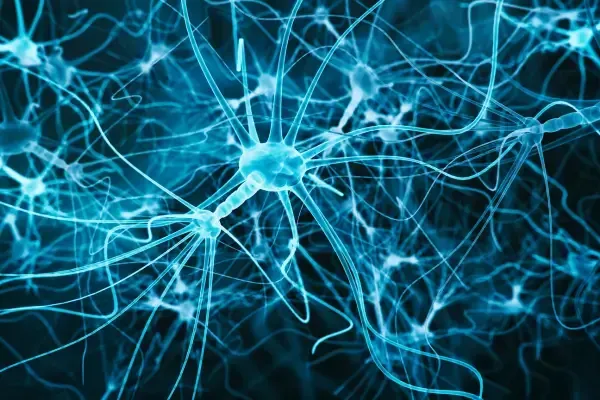
Central Nervous System & the Immune System
Did you know that your nervous system and immune system talk to each other?
These two systems are not only linked but rely on each other to make sure your body works properly and stays healthy.
Having a healthy nervous system
Having a healthy nervous system is very important. The immune system and the nervous system work together and talk to each other through chemical messages1 looking for changes inside and outside our bodies and to launch an immune response if needed. When they sense an invader in the body, like a virus, they release chemicals to start an immune response, and they send messages to tell the brain what is happening.

What does the research show?
We also have another part of our nervous system, called the autonomic nervous system, that talks to the immune system. This part of your nervous system controls things that are automatic like breathing or our heart beat. Our immune system is also something that is automatic and there are nerves that go to all of our immune organs, like our spleen and tonsils. These nerves then talk to the immune cells through chemical messages and cause the release of other hormones which can then control and coordinate a healthy immune response.
This automatic part of our nervous system also detects emotional stress, and this is how stress can interfere with our immune response. Cortisol, the hormone that controls the immune response, is also released under stress. Through these two pathways, emotional stress can alter the levels of the immune chemical messengers in the body and weaken our immune response.
So, we can now see that the central nervous system and the immune system talk to each other and work together to properly defend the body from invading pathogens and tissue injury.
So, how does this relate to chiropractic? Not only does chiropractic affect the immune system, but there is also evidence that chiropractic definitely affects the nervous system. We know that when your spine is not moving properly, this changes the way your brain can sense what is going on in and around your body and the way it controls your body.
If the joints of your spine are not moving properly, this may affect how well you can sense what is going on in and around you and how well you can react to your environment.
Research has shown that when a chiropractor then gently adjusts these subluxations, it helps the brain to more accurately ‘see’ what is going on in and around the body. Research has also shown that it activates a part of our brain called the pre- frontal cortex. The pre-frontal cortex plays a big part in regulating and controlling many functions of the brain, including the autonomic nervous system and the hypothalamus and the related hormonal system.
So, when you get adjusted by your chiropractor, it might help you to be able to respond and adapt to your environment better and allow your nervous system and your immune system to talk to each other clearly to keep you balanced and healthy.
Disclaimer and References This information is provided for educational purposes only. It is not intended to be professional advice of any kind. Haavik Research Ltd encourages you to make your own health care decisions based on your own research and in partnership with a qualified health care professional. chiroshub.com © Haavik Research 2021 1. Godinho-Silva C, Cardoso F & Veiga-Fernandes H. 2019;37:19-46. 2. I Am. 3. Buckingham JC, et al. 1996;54(1):285-98. 4. Kawli T, He F & Tan M-W. 2010;3(11- 12):721-31. 5. Kipnis J. Scientific American 2018;319(2):28-35. 6. Mulla A & Buckingham JC. 1999;13(4):503-21. 7. Silverman MN, et al. Viral Immunol 2005;18(1):41-78. 8. Leonard BE. 2006;13(5-6):268-76. 9. Aich P, Potter AA & Griebel PJ. Int J Gen Med 2009;2:19-32. 10. Elenkov IJ, et al. Pharmacological reviews 2000;52(4):595-638. 11. Felten SY, et al. In: Goldstein DS, Eisenhofer G, McCarty R, eds. 1997:583-87. 12. Kohm AP, Sanders VM.21(11):539-42. 13. Nance DM, Sanders VM. Brain, Behavior, and Immunity 2007;21(6):736-45. 14. Sanders VM, Kohm AP. 2002;52:17-41. 15. Dorshkind K, Horseman ND. 2001;23(3):288-94. 16. Godbout JP, Glaser R. J 2006;1(4):421- 27. 17. Herkenham M, Kigar SL. Prog 2017;79(Pt A):49-57. 18. Uthaikhup S, et al. Arch Gerontol Geriatr 2012;55(3):667-72. 19. Haavik H, Murphy B. J 2012;22(5):768-76. 20. Treleaven J. Man Ther 2008;13(1):2-11. 21. Daligadu J, et al. JMPT 2013;36(8):527-37. 22. Haavik H, Murphy B. 2012;22(5):768-76. 23. Haavik H, et al. JMPT. 2017 doi: 10. 1016/j.jmpt.2016.10.002 24. Taylor HH, Murphy B. JMPT. 2008;31(2):115-26. 25. Lelic D, et al. 2016;2016:1-9. 26. Diorio D, Viau V, Meaney M. 1993;13(9):3839-47. 27. Hänsel A, Von Känel R. 2008;2(1):21.
Dr. Heidi Haavik BSc(Physiol) BSc(Chiro) PhD • Dr. Kelly Holt BSc, BSc(Chiro), PGDipHSc, PhD • Dr. Jenna Duehr BChiro, BHSc(Nursing), MHSc
